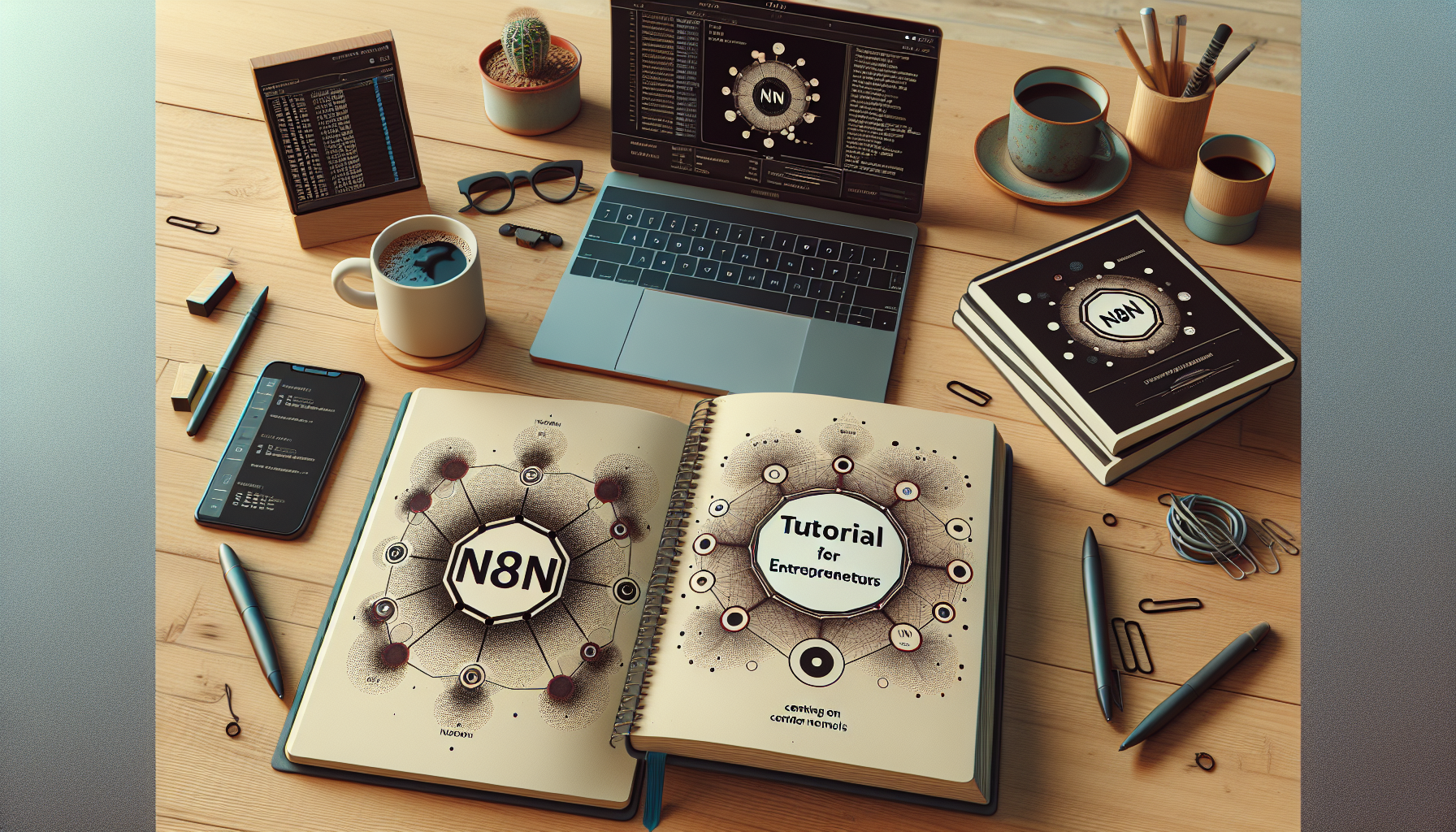What is N8N?
N8N is an open-source workflow automation tool that enables you to connect different applications and services. Created for professionals and entrepreneurs, it allows you to automate repetitive tasks without the need for complex coding skills. N8N provides a flexible interface with a visual workflow designer, making it user-friendly for those looking to streamline their operations.
Why Use N8N?
-
Open Source: Unlike many other automation tools, N8N is open source, which means it is free to use, and you can customize it according to your needs. This is especially appealing for entrepreneurs looking to reduce costs.
-
Numerous Integrations: N8N supports over 200 services, including popular platforms like Google Sheets, Slack, and Trello. This broad range allows you to create complex workflows that can bridge different applications seamlessly.
-
Flexibility: N8N allows for both simple no-code solutions and more complex systems that utilize JavaScript code for tailored operations. This makes it suitable for both novices and advanced developers.
-
Self-Hosting: You have the option to host N8N on your own server, offering additional data security and control. This is particularly important for businesses handling sensitive information.
Setting Up N8N
To get started with N8N, follow these steps:
Step 1: Installation
-
Using Docker: The easiest method to install N8N is through Docker. Open your terminal and run the command:
docker run -it --rm -p 5678:5678 n8n /bin/sh -c "n8n start"This command pulls the N8N image from Docker Hub and starts a new container.
-
Standalone Installation: If you prefer a standalone installation, you can download Node.js and install N8N using npm:
npm install n8n -gAfter installing, you can start N8N with the command
n8n start.
Step 2: Accessing the N8N Interface
Once N8N is running, navigate to http://localhost:5678 in your web browser. You’ll be greeted by the N8N workflow editor interface where you can start creating your automated workflows.
Step 3: Creating Your First Workflow
-
Add a Trigger Node: Click on the ‘+’ icon to add a new node. For your first workflow, select a trigger node. You could choose something simple like a cron trigger, which allows you to set up a scheduled automation.
-
Adding Action Nodes: After selecting your trigger, add action nodes that respond to your trigger. For instance, if you want to send a message on Slack whenever the cron job runs, simply search for the Slack node and configure it with your credentials.
-
Connecting Nodes: Drag a line from the trigger node to the action node. This establishes a flow that tells N8N that the action occurs in response to the trigger.
-
Testing Your Workflow: Once your workflow is set up, you can execute it by clicking the ‘Execute Workflow’ button in the top right corner. Check to see if everything works as expected.
Step 4: Advanced Workflow Features
-
Conditional Logic: Use the IF node to create branching paths in your workflows. This allows you to run different actions based on conditions (e.g., checking if a new lead’s status is ‘qualified’).
-
JSON Data Handling: If you are working with APIs, understanding JSON data is crucial. N8N allows you to parse and manipulate JSON data seamlessly.
-
Error Handling: Every workflow should have a plan for errors. N8N provides error handling mechanisms. You can use the Error Node to define what should happen when an action fails.
Step 5: Scheduling Workflows
Scheduling is essential for continuous operations without manual intervention:
-
Cron: Use the Cron node to run workflows at specific times (daily, weekly, etc.). In the settings, you can define the execution time according to your preferences.
-
Webhooks: If you need your workflow to run in response to external data, the Webhook node allows you to set up a listener that activates your workflow.
Step 6: Utilizing the Community
N8N has an active community that contributes to its ongoing development. Participate by:
-
Exploring Templates: Community-contributed templates provide great insights and can serve as a solid foundation for your workflows.
-
Forums and Support: Engage in N8N forums for troubleshooting, sharing ideas, and seeking advice.
Step 7: Security Considerations
When self-hosting N8N, security is paramount:
-
SSL/TLS: Ensure you secure your N8N instance with HTTPS. Utilize Let’s Encrypt for free SSL certificates or configure your server for secure HTTPS connections manually.
-
User Authentication: Enable basic authentication for your N8N workflows to prevent unauthorized access. N8N allows you to set up username and password protection through its settings.
Step 8: Monitoring and Maintenance
Regular monitoring of your workflows ensures they run smoothly:
-
Logs: N8N provides logs that you can check for errors and operational insights.
-
Updates: Keep N8N updated to access new features and enhancements. If self-hosted, you can pull the latest images from Docker or update your npm package.
Step 9: Finding Use Cases for Entrepreneurs
N8N can be particularly beneficial across several use cases:
-
Lead Management: Automatically route new leads from forms into your CRM, set follow-up reminders, and even send thank-you emails simultaneously.
-
Social Media Management: Schedule posts across different platforms using automated workflows that pull content from your blog or other sources.
-
E-commerce Automation: For e-commerce businesses, automate tasks like inventory updates, order confirmations, or customer notifications to enhance customer engagement.
-
Data Aggregation: Set up workflows to pull data from various sources, aggregate it, and store it in a centralized location like Google Sheets or a database.
By leveraging N8N, entrepreneurs can significantly increase productivity and focus on strategic growth rather than being bogged down by repetitive tasks.


